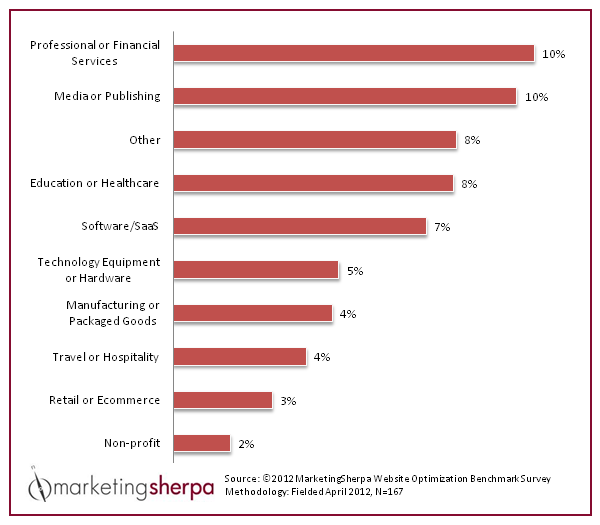Managing Website Traffic
At this point, we have traffic flowing into our digital property from Owned, Earned, or maybe even Paid sources. We’ve survived a technology build and are in the thick of executing against our KPIs.
What to do with all these website visitors?
Watch Conversions
Engagement on a digital property usually has a purpose as it relates back to the business objectives. Digital marketers usually call this a “conversion”, as it notes the user has converted over to completing a desired action. Examples of this might include signing up for an email newsletter, completing a purchase of a product, or downloading a whitepaper. These should be ideally tied to the KPIs defined in the Strategy exercise as they can be measured with analytics – we’ll cover this more in the next section on Measurement.
However, not everyone that comes to our property will be ready to complete an action. In fact, the vast majority of our visitors will probably not convert. Current stats show most properties can convert anywhere from .05 – 10%.
A recent study shows a rough breakdown by industry:
Also, don’t forget conversions can also be defined along a variety of metrics. Sometimes divided into macro and micro conversions. To the uninitiated, these can be “vanity” metrics like a conversion counting users clicking on the Twitter follow button. This does not mean the user will follow the company off the Twitter page. It takes guts to honestly define KPIs and the conversions that follow.
The reason? A host of factors influence conversion: traffic sources, the business model, and where that visitor might be in the buying cycle as it relates to the price point at which we’re selling. Not to mention how they found the website to begin with. A strong word of mouth recommendation with a link within an email will likely convert much higher than a banner ad.
Let’s explore how conversions might relate to a business model beyond a typical ecommerce business.
For example, visitors to a media website may be coming simply for the content on that day and nothing more. The property is most likely seeking to monetize this engagement through advertising. So, a very basic KPI might be watching pages per visit and the number of unique visitors week over week using analytics. These traffic sources could come from Paid but most likely will originate via Owned on a social platform, search, or perhaps an email marketing campaign. The Earned traffic could come from a guest-blogging or mention from influencer across the web via their blog or a tweet.
So, we have traffic – now what?
Consider the following frameworks to help:
Traffic originates in the following ways:
- Owned
- Earned
- Paid
Engagement can be organized in the following ways:
- Acquisition
- Nurture
- Retention
So, each of our traffic originators of Owned, Earned and Paid will help us acquire users. Next, we will focus on nurturing them along in the buying process. Following a successful purchase (depending on what that might be defined as), we will focus on retaining them to earn their repeat business or engagement.
Key Takeaway: Knowing our KPIs from our strategy, we can work to define various conversion actions on our digital property and measure these against Owned, Earned and Paid. We can then organize the engagement around Acquisition, Nurture and Retention as it relates to the business model or buying cycle.

